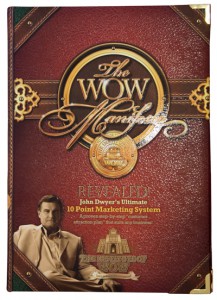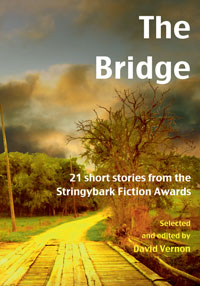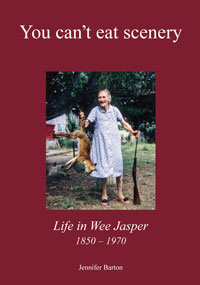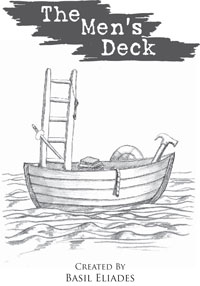

Books, especially in small quantities (up to 500) are one of our specialties. The proprietors of Kainos Print have been producing this kind of work for nearly 20 years.
Kainos Print offers printing in two different book sizes — A4 (210x297mm) and A5 (148x210mm) — with many additional options. You can choose from as few as three copies for A4 books, 10 copies for A5 books, to as many as 500 copies for both A4 and A5 books. Choose from 64 pages plus cover, to 464 pages plus cover. You can choose the number of pages you require in increments of twenty pages. We offer any size you like — up to the A3 award winning book ‘The WOW Manifesto’. Books in ‘A’ sizes are the most economical.
 What is a Book?
What is a Book?We define books as multi page publications of 68 pages or more. Books are perfect bound — glued in the spine. You can click on either of the products listed to go straight to the product page.
If your book requirements can’t be accommodated on the A4 or A5 book product pages, we have added a custom quote request form so you can now ask for a quote for the exact size, exact number of pages, and the exact number of colour pages. We have added a variety of binding options as well. Click here to open the custom quote request form.
We offer the printing options of three to ten copies for A4 books with academic publishing in mind.
You can choose to have your book with a custom hand crafted hard cover binding. You get a genuine, top quality, hand crafted hard bound book with buckram (very heavy cloth) bound onto a heavy card. The buckram can be virtually any colour. Books are sewn in the spine and glued. They have end papers glued on the inside covers. They also have head bands (small velvet like bands at the top and bottom of the spine). In other words, they are almost indestructible! Books can have up to four lines of gold or silver lettering on the cover and one line on the spine.
It is difficult to cover all potential case binding variations as the cover can take many forms. If the description in the previous paragraph is not what you are looking for, then click here to send us a custom quote request. Here are the main case binding options.
We offer printing via a large range of papers from 100gsm uncoated stock to 130gsm satin or gloss for the text (inside) pages, and 300gsm satin or gloss stock for the cover. Other choices are available. Use our custom quote request form to ask for a quote.
 Colour
ColourBooks can be printed in full colour throughout, in black and white throughout or any combination of colour and black and white. Our digital printing process means black and white and colour pages can appear in any combination throughout your book. There is no need to gather all the colour pages into one part of the book — put them in wherever they are needed. Please carefully add up the number of colour pages in your mixed colour and black and white book, and choose the appropriate percentage of colour pages when placing your order.
Covers are always in full colour on the outside, and blank on the inside. If you want to have anything printed on the inside of a book cover, it can’t go anywhere near the spine, as the glue used in binding won’t work properly.
To add impact to your publication, we offer gloss or satin celloglazing. Click here to learn more about our coating options.
We highly recommend you consider having the cover of your book celloglazed to add protection from scuffing, especially during tranportation.
You can choose a PDF proof at no charge, or a hard copy proof for a modest additional charge. Books are often complex documents and more can go wrong than with simple single sheet documents. We therefore recommend you ask for a hard copy proof. If the illustrations in your book are colour critical, then you really should opt for a hard copy proof.
Kainos Print is committed to customer education. We realise that some of our customers are experts, but some are worried that their lack of knowledge and experience will mean their project won’t turn out they way they want. We have made a considerable range of resources available on our web site to help all our customers. Click here to access these resources. In particular, we have created a page specifically designed to help you prepare your files for successful, quality printing. Click here to access the ‘how to prepare your files’ page.
Andew Hingeley of Kainos Print has written a brief white paper on short run book publishing. It asks whether or not you have a book in you (and suggests that you probably do), economical book formats, paper choices, what software to use, basic book conventions to follow, useful material on ISBN numbers and Cataloguing in Publication data, setting a selling price, and promoting your book. Click here to download the white paper (PDF). He has also published an interview with a client who has done a superb job at promoting his self-published book. Click here to go to the interview. A client of ours, Ian Irvine, author of the best selling Runcible Jones children’s books (amongst others) has written a comprehensive paper on everything an author needs to know before (and after) approaching a publisher. Click here to download the paper (PDF).
 ISBN Numbers
ISBN NumbersAll books will potentially benefit from having an ISBN number. The ISBN (International Standard Book Number) is a 13-digit number that uniquely identifies books and book-like products published internationally. Each number identifies a unique edition of a publication, from one specific publisher, allowing for more efficient marketing of products by booksellers, libraries, universities, wholesalers and distributors. We have prepared a detailed guide explaining what an ISBN number is and the benefits of obtaining one. We provide links to various publications and application forms. Click here to go to our Guide to ISBN numbers.
Self publishers should consider taking up the free service offered to publishers by the National Library of Australia to provide a bibliographic record for a book before it is published. Click here to go to our CiP Guide.
If you can’t find the product you want on our web site (for instance, more than 500 copies of a book), click here to go to our custom quote request from where you can provide us with details and ask for a quote for any kind of printed product.
Kainos Print delivers superior products, printed on the best equipment available by highly experience people who are committed to your complete satisfaction. We guarantee our work (click here for our guarantee details). Our commitment is to produce the highest quality job and deliver it on time.
If you don’t have the time, the confidence, the ability or the software to design your own books, Kainos Print offers a top flight design service. We use a highly experienced designer, Dragan Djuric, who has done a considerable amount of excellent design work over many years for Kainos Print staff members. You can see Dragan’s design portfolio for yourself by clicking here. Our design rates are extremely competitive, and our turnaround is extremely fast. You will find instructions for using our design service and indicative pricing when you visit Dragan’s portfolio page.
All books require editing. Editing can be performed with a light touch, or a heavy touch. Editing with a light touch will result in minimal changes. The editor will be checking for elements such as spelling, punctuation and consistency. Editing with a heavy touch will be more expensive, and may result in complete re-writing where necessary. Unless you are absolutely certain of your own editorial skills, we highly recommend having an editor cast an eye over your book.
Click here to learn more about editing on our dedicated book site.
We recommend Nancy Shearer. Nancy offers proofreading and editing services for manuscripts, brochures and documents, online content, and English as a Second Language (ESL) assistance. She can be contacted on 0414 984 784 or by email at [email protected].
Nancy normally charges an hourly rate, which would be discussed according to your particular requirements. She would draw up with you a mutually agreeable plan and method of payment.
We have produced books on a vast variety of subjects, but above all, we like to encourage people simply to tell their stories. We can all recall how important the last years of the lives of our loved ones were as they opened up and we learnt so much we never knew from them. We tend to think of our own lives as boring and repetitious and not worth writing about. We are, of course, very wrong, and our children and their children will find our own stories incredibly valuable as we approach the end of our days. So . . . we encourage you to write down your own story and publish it.
 Understand and use the normal layout and page numbering conventions for books
Understand and use the normal layout and page numbering conventions for booksMost books and some booklets will have preliminary matter, which might include some or all of the following. The order laid out below is the correct order.
Throughout our web site, we use the standard convention in defining pages and leaves of a publication. For instance, an A4 sheet printed on two sides is a two page flyer. It is a one page flyer if it is printed on one side only. An A4 saddle stitched booklet of, say, twelve pages plus a four page cover consists of six internal A4 leaves printed on both sides, therefore twelve pages. The cover consists of two A4 leaves printed on both sides, therefore four pages. Before the booklet is bound, it consists of four A3 sheets, three for the internal pages and one for the cover. Each sheet has four pages printed on it — two on one side and two on the other. A perfect bound book consisting of fifty leaves printed on both sides is a 100 page book plus a cover which would normally consist of two leaves printed on one side only.
Kainos Print is proud to announce that our customer, John Dwyer’s book, ‘The WOW Manifesto’ was awarded the highly sought after and prestigious gold medal in the small business category, at the National Print Awards on Friday 24th May at the 2013 National Print Awards Dinner, held at the Palladium Ballroom in the Crown Entertainment Complex, Southbank, Melbourne. John’s book represents the epitome of the book printing craft.
Here are some of the types of books we produce
|
|